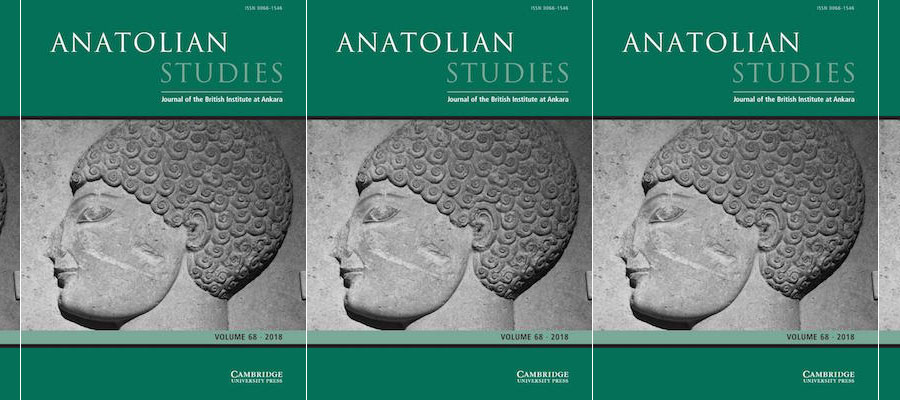Anatolian Studies: Journal of the British Institute at Ankara, volume 68 (2018).
CONTENTS INCLUDE
Mark Whittow 24 August 1957 to 23 December 2017
Jim Crow
Rome and the Tzani in late antiquity: a historical and archaeological review
Emanuele E. Intagliata
Compared to other stretches of the eastern frontier, northeastern Anatolia has rarely attracted the attention of scholars of the Roman and late antique periods. The region is known, through late antique written sources, to have housed a belligerent confederation of tribes, the Tzani, who lived off raids conducted against their neighbours. Until the fifth century AD, the Roman approach to the Tzanic problem was one of quiet co-existence, but, in the early sixth century AD, after war broke out again with Persia, necessity moved the emperor Justinian (r. AD 527–565) to intervene more actively against the Tzani. According to the sixth-century historian Procopius, the Tzani were subdued and a chain of forts was constructed in their lands to protect access to the Black Sea coast. The remains of these forts, as well as those of other sixth-century AD infrastructure allegedly built under Justinian, are still elusive. Nonetheless, evidence on the ground and in the written sources can still help investigate the nature of the Justinianic frontier defensive system.
An analysis of Byzantine burials from Hacımusalar Höyük (Turkey)
Carrie L. Sulosky Weaver
The contents of 118 inhumation burials (seventh to 12th century AD) excavated at Hacımusalar Höyük (ancient Choma) were studied in order to reconstruct the Byzantine population. Overall, the sample is similar to that of other Byzantine populations: burial customs appear typical of contemporary practices, children are overrepresented, males and females are represented roughly equally and heights fall within the average range calculated for Byzantine individuals in the eastern Mediterranean. Individuals from Hacımusalar experienced incidences of skeletal trauma, infections, degenerative joint disease, anaemia, dental diseases, spina bifida occulta and cancer. The dataset presented here is one of the most comprehensive of any Byzantine population in Anatolia and should advance our understanding of the region during this crucial time period.
